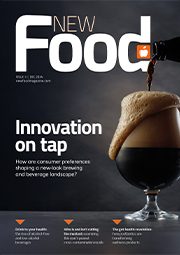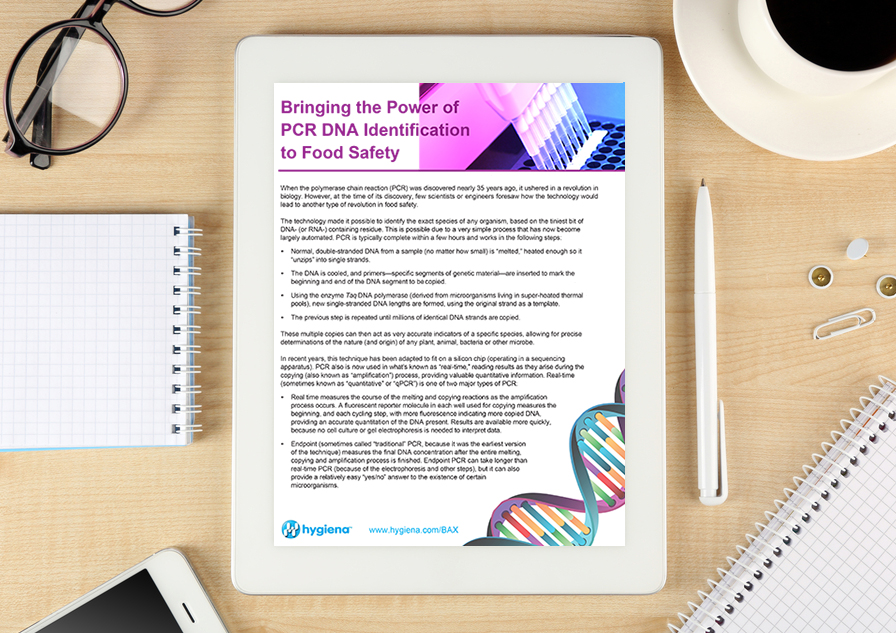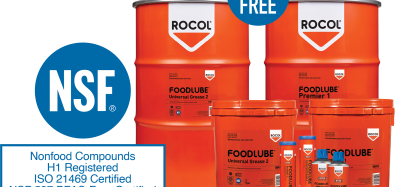Whitepaper: Bringing the Power of PCR DNA Identification to Food Safety
- Like
- Digg
- Del
- Tumblr
- VKontakte
- Buffer
- Love This
- Odnoklassniki
- Meneame
- Blogger
- Amazon
- Yahoo Mail
- Gmail
- AOL
- Newsvine
- HackerNews
- Evernote
- MySpace
- Mail.ru
- Viadeo
- Line
- Comments
- Yummly
- SMS
- Viber
- Telegram
- Subscribe
- Skype
- Facebook Messenger
- Kakao
- LiveJournal
- Yammer
- Edgar
- Fintel
- Mix
- Instapaper
- Copy Link
Posted: 1 February 2018 | Hygiena | No comments yet
When the polymerase chain reaction (PCR) was discovered nearly 35 years ago, it ushered in a revolution in biology.
However, at the time of its discovery, few scientists or engineers foresaw how the technology would lead to another type of revolution in food safety.
The technology made it possible to identify the exact species of any organism, based on the tiniest bit of DNA- (or RNA-) containing residue. This is possible due to a very simple process that has now become largely automated. This whitepaper will discuss how PCR technology works withing a series of steps…
This whitepaper is restricted - login or subscribe free to access


Why subscribe? Join our growing community of thousands of industry professionals and gain access to:
- bi-monthly issues in print and/or digital format
- case studies, whitepapers, webinars and industry-leading content
- breaking news and features
- our extensive online archive of thousands of articles and years of past issues
- ...And it's all free!
Click here to Subscribe today Login here
Related content from this organisation
Related topics
Lab techniques, PCR Technology, PCR-based assays, Polymerase Chain Reaction (PCR), Technology & Innovation










